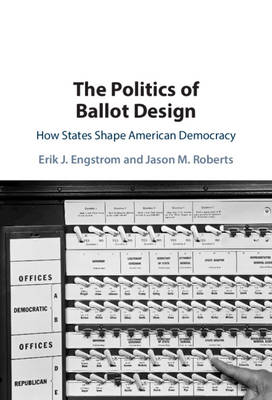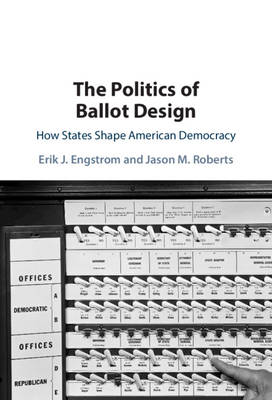
- Afhalen na 1 uur in een winkel met voorraad
- Gratis thuislevering in België vanaf € 30
- Ruim aanbod met 7 miljoen producten
- Afhalen na 1 uur in een winkel met voorraad
- Gratis thuislevering in België vanaf € 30
- Ruim aanbod met 7 miljoen producten
Zoeken
The Politics of Ballot Design
How States Shape American Democracy
Erik J Engstrom, Jason M Roberts
Hardcover | Engels
€ 148,45
+ 296 punten
Uitvoering
Omschrijving
US federalism grants state legislators the authority to design many aspects of election administration, including ballot features that mediate how citizens understand and engage with the choices available to them when casting their votes. Seemingly innocuous features in the physical design of ballots, such as the option to cast a straight ticket with a single checkmark, can have significant aggregate effects. Drawing on theoretical insights from behavioral economics and extensive data on state ballot laws from 1888 to the present, as well as in-depth case studies, this book shows how strategic politicians use ballot design to influence voting and elections, drawing comparisons across different periods in American history with varying levels of partisanship and contention. Engstrom and Roberts demonstrate the sweeping impact of ballot design on voting, elections, and democratic representation.
Specificaties
Betrokkenen
- Auteur(s):
- Uitgeverij:
Inhoud
- Aantal bladzijden:
- 180
- Taal:
- Engels
Eigenschappen
- Productcode (EAN):
- 9781108842808
- Verschijningsdatum:
- 17/12/2020
- Uitvoering:
- Hardcover
- Formaat:
- Genaaid
- Afmetingen:
- 152 mm x 229 mm
- Gewicht:
- 412 g

Alleen bij Standaard Boekhandel
+ 296 punten op je klantenkaart van Standaard Boekhandel
Beoordelingen
We publiceren alleen reviews die voldoen aan de voorwaarden voor reviews. Bekijk onze voorwaarden voor reviews.











